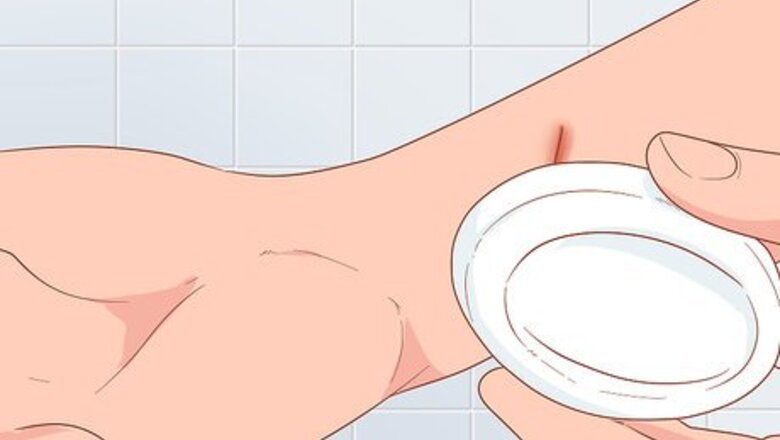
views
Healing the Skin
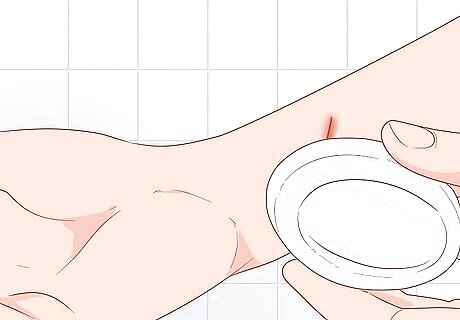
Keep the injured skin clean. If you've had acne, surgery, cuts, piercings, or tattoos, wash the skin with soap and water to remove dirt or germs. Gently pat the skin dry and spread a thin layer of petroleum jelly or an over-the-counter antibiotic cream. Then put a bandage on the skin. Continue to do this until the skin closes or stops releasing fluid. Wash the skin every day to stop keloids from forming and to prevent infection.
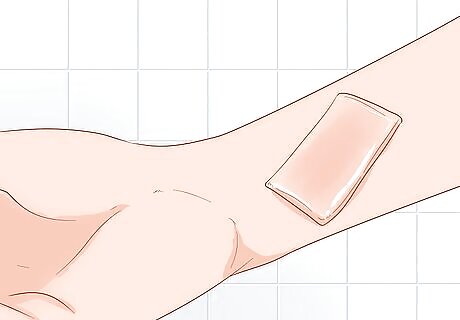
Rub silicone gel or sheets onto the keloid for 2 to 3 minutes twice a day. Wait until the wound closes and then squeeze silicone gel onto the keloid. Use clean fingertips to massage the gel onto the keloid for 2 to 3 minutes. Then let the gel air dry. Do this twice a day to stop the keloid from growing and to help it get smaller. Purchase silicone gel or sheets at your local pharmacy or grocery store. Silicone helps prevent keloids from developing and can flatten ones you already have. Silicone gel and sheets are safe for people of all ages to use.
Apply pressure to the injured skin for 2-3 months. Wrap a bandage or medical tape around the skin so it continuously presses down on the skin as it heals. Leave the bandage wrapped around the skin for 12-24 hours a day for 2-3 months. Constant pressure not only stops the keloid from growing, but it can also make the keloid get smaller.Tip: To stop keloids from growing near an ear piercing, buy a Zimmer splint that you can wear on your ear. The splint will apply pressure and prevent the keloid from getting bigger. Take the bandage off when you bathe and put it back on when you're finished. If you have keloids by ear piercings, use pressure earrings to help flatten them.

Get corticosteroid injections every 4 to 6 weeks. If you've recently had surgery or your skin is recovering from damage, ask your doctor to inject corticosteroid medication into the keloid. The steroids will reduce itchiness and break down the collagen that forms the keloid. Most dermatologists recommend getting up to a total of 5 injections over the course of several months.
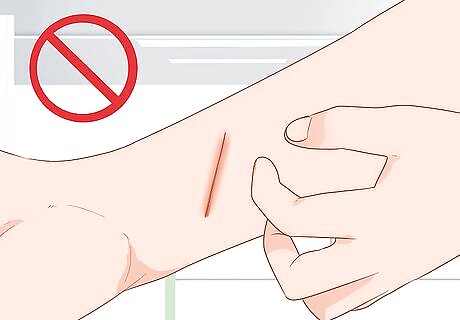
Avoid scratching the skin if it's itchy. Skin that's scarring is often itchy, but it's important not to scratch. Scratching skin as it heals will cause more damage and more scarring, which will make the keloid grow. To calm itchy skin, try putting an ice pack on it for 10 minutes at a time throughout the day and apply a moisturizer to prevent the skin from drying out.
Getting a Keloid Medically Removed
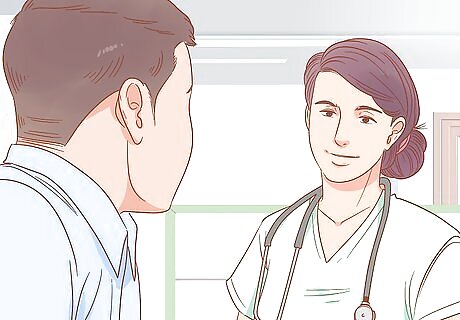
Ask your doctor to examine the keloid. If your keloid continues to grow after you've taken steps to stop it, get a medical examination. The doctor will look at the keloid and take your medical history to determine the cause of the keloid. The doctor will then discuss removal options. If the doctor suspects that the keloid is growing because of another health issue, they may want to do a biopsy. The doctor will remove a little of the tissue and look at it under a microscope to see if there are cancerous cells.
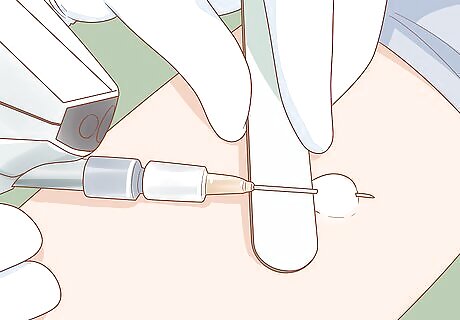
Try cryotherapy to freeze off the keloid. If you have a small keloid or several small keloids caused by acne, ask your doctor about cryotherapy. The doctor will inject liquid nitrogen into the keloid which will destroy the keloid from the inside. You'll need to repeat the treatment every 20 to 30 days until the keloid is removed. Keep in mind that cryotherapy can lighten the skin.
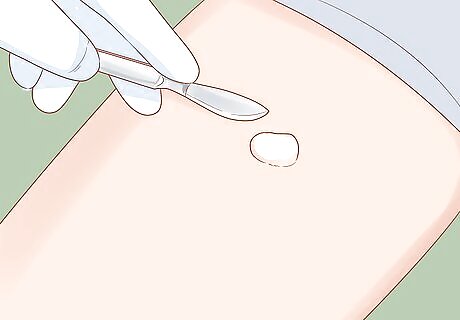
Get surgery to remove the keloid. Your doctor might recommend surgical removal if the keloid is large or doesn't stop itching. Keep in mind that surgery can cause other keloids to form, especially if you're predisposed to developing keloids. To prevent this from happening, you'll probably need a combination of treatments, such as surgery and corticosteroid injections.Tip: Check with your insurance company to see if keloid surgery is covered since some companies view it as cosmetic surgery. Remember to follow the skin healing steps to recover from the keloid-removal surgery.

Try laser surgery. The dermatologist will direct a laser at your keloid which will release a pulse of energy. This energy will make the blood vessels in the keloid become smaller and will eventually cause it to disappear over the course of a few treatments. The laser will also lighten the color of the surrounding skin.

Avoid dermabrasion which could cause more keloids. Physically removing the keloid by sanding or scraping it off damages the surrounding skin tissue. This can cause more keloids to develop as the skin tries to heal. Treat the skin around your keloid as gently as possible to avoid further irritation.




















Comments
0 comment